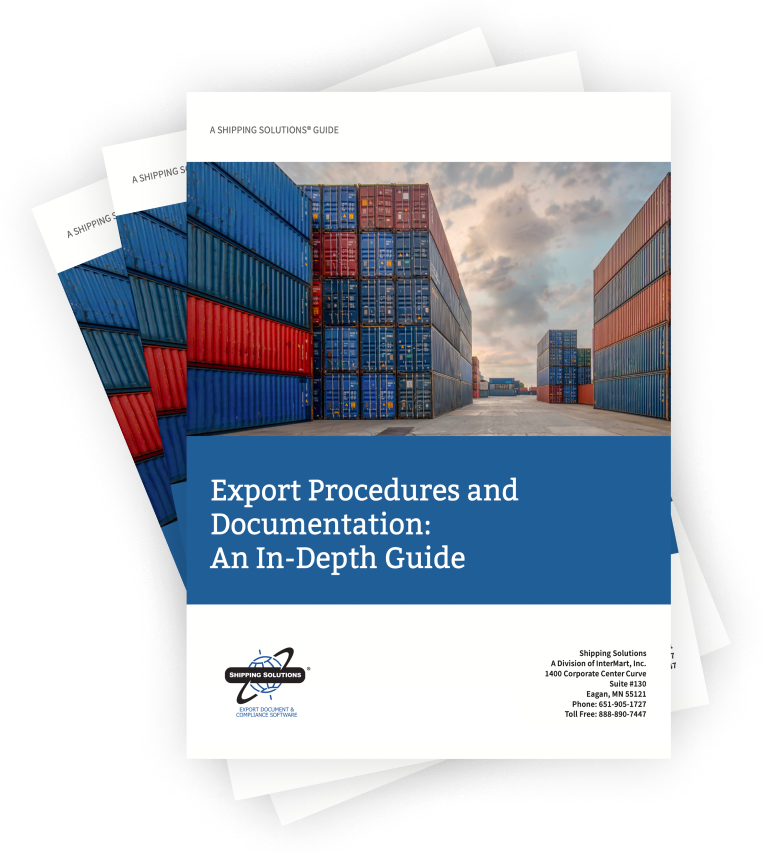The International Trade Blog Import Procedures
Repaired Goods: Import and Re-export
On: March 19, 2018 | By:  Catherine J. Petersen |
25 min. read
Catherine J. Petersen |
25 min. read
 Congratulations! You sold a piece of your equipment and machinery to a customer in the United Kingdom who also purchased an extended warranty and service agreement from your firm.
Congratulations! You sold a piece of your equipment and machinery to a customer in the United Kingdom who also purchased an extended warranty and service agreement from your firm.
Before you shipped your equipment to this new customer, of course, you verified that the goods did not require an export license and that the customer was not listed as a restricted end-user by any U.S. government agency.
Now, some months later, the equipment that you sold to your British customer has broken, and they wish to return the item for repair. They have asked you for guidance on how to proceed. It is urgent. You want to be sure that the return process is as inexpensive as possible and without any delays in shipping, handling, customs clearance, repair, and return.
Here are some steps that will help you make arrangements that will ease the flow of paperwork and goods between you and your customer.
Step 1: Sending an Item to the U.S. for Repair
Your British customer (or a customer in any country) should first check with his or her own customs authority. Every country's customs authority has a different procedure and documentation for repairs, which your customer must research and then follow.
Some countries require that the goods being returned be registered with the customs authority prior to sending it to the U.S. for repair. This proves that the goods have been legally imported and duty paid on the goods, and that duty should not be assessed on the entire item when returned.
The customs authority in the buyer’s country will likely assess duty on the declared value of the repair; however, it can also be possible that the country’s laws require that duty be paid on the full value of the goods. As a result, the customer may ask you to declare a value of $1, $5, or $100 when the goods are shipped back to them after the repair. If that is the value, you have my blessing, but if the value on the good is actually $3,000 or $10,000, then declare the higher value.
Step 2: Contact Your Customs Broker
Contact your broker and discuss the steps you and your customer should take to import the goods for repair. This will lay the groundwork for a smooth return to your customer.
It is important to establish a procedure with your customs broker; they will be able to advise you whether it is beneficial to import the goods under a Temporary Importation under Bond (TIB). A TIB is useful if the goods were advanced in value since exportation. Alternatively, the product could be eligible for import using the Harmonized Tariff Schedule of the U.S. (HTSUS) number found in Heading 9802.
The customs broker may provide specific instructions for you and your customer to follow in preparing the documentation on the item being sent to you. Remember, when you are named on the international bill of lading as the importer or consignee—even for goods returned for repair—you become an importer subject to U.S. Customs and Border Protection (CBP) rules, regulations and laws.
Step 3: Review the HTSUS Chapter 98 Provisions
The HTSUS holds a treasure trove of classifications that may allow an import to import its goods duty free. However, there are certain conditions that must be documented prior to their use. The following is a list of conditions that apply to the return of goods with Heading 9801, which is quoted from the HTSUS Chapter 98 Notes:
1. In the absence of a specific provision to the contrary, the tariff status of an article is not affected by the fact that it was previously imported in the customs territory of the United States and cleared through customs whether or not duty was paid upon such previous importation.
2. Any article exempted under sub-chapters IV through VII, inclusive, or sub-chapter IX from the payment of duty shall be exempt also from the payment of any internal-revenue tax imposed upon or by reason of importation.
3. The following requirements must be met:
- The goods were not advanced in value or improved in condition by an process of manufacture or other means while abroad (if they were, refer to the provisions under Heading 9802);
- The goods were not exported with benefit of drawback;
- The articles are not of a kind with respect to the importation of which an internal-revenue tax is imposed at the time such article is entered, unless such article was subject to an internal-revenue tax imposed upon production or importation at the time of its exportation from the United States, and it shall be proved that such tax was paid before exportation and was not refunded; or
- They were not manufactured or produced in the United States in a customs bonded warehouse or under heading 9813.00.05 and export under any provision of law; and
- Goods are being returned within three years of their export under the HTSUS 9801.00.10xx. (The last two digits of this number should be replaced with a corresponding number from the HTSUS based on the original classification of the product.)
Robert Imbriani explains classifying your goods for warranty repair in the webinar, What You Need to Know About Exporting Samples and Repaired Goods.
Additional Requirements for Foreign Goods Being Returned
If the goods that were sold and being returned to the U.S. for repair were foreign-made goods imported into the U.S. before being sold and ship to your international customer, you need to be aware of some additional limitations and time constraints.
If the goods were foreign made and met all the requirements outlined above from the HTSUS Chapter 98 Notes including (e), which specifies they must be returned within three years after export, you should obtain documentation proving the goods were exported three years ago or less:
- Copy of the entry into the foreign country,
- U.S. export invoice or bill of lading/airway bill, or
- Electronic Export Information (EEI) or the Automated Export System (AES) filing exemption.
If the foreign-made goods are being returned more than three years after their export, they are subject to duty (and fees) based on the HTSUS classification found in Chapters 1 through 97 unless they meet the requirements of HTSUS 9813.00.05:
They are articles to be repaired, altered or processed (including processes which result in articles manufactured or produced in the United States).
Articles imported under 9813.00.05 are imported under a temporary import bond or a Carnet. The importer must provide CBP with the HTSUS subheading number under which entry is claimed, and:
- A statement of the use to be made of the articles in sufficient detail to enable the prot director to determine whether they are entitled to entry as claimed, and
- A declaration that the articles are not to be put to any other use, and that they are not imported for sale or sale on approval.
Step 4: Prepare the Commercial Documents for Import
If the goods have not been advanced in value or improved in condition while overseas, you or your customs broker will likely be able to enter the goods into the U.S. duty free following these steps:
1. Issue a Materials Return Authorization (MRA)
An MRA instructs the British customer to prepare a customs invoice indicating “the goods are of U.S. origin, being returned for repair, have not been advanced in value or improved in condition.” (If the goods are of foreign origin, the country of origin statement should obviously reflect that.)
This instruction is valid only if the customer has not improved the condition of the goods or advanced the value of the goods. If the goods have been advanced in value, contact your customs broker for guidance.
Instruct the customer to add two HTSUS numbers, which may be found at the U.S. International Trade Commission's website, to the customs invoice. The first classification to add is 9801.00.1055, which is for U.S. or foreign goods returned.
The second number to be added is the correct HTSUS number for the item being returned. For this example, it is the classification of traffic monitoring/signaling equipment used for inland waterways under 8530.80.0000. An example of the text to be added is noted here:
Traffic Monitoring/Signaling Equipment for inland waterways
being returned for repair.
Country of origin: the U.S.A.
Not advanced in value or improved in condition.
Harmonized Tariff Schedule of the U.S. Numbers:
8530.80.0000 and 9801.00.1055.
2. Complete the Shipper's Declaration
Instruct the customer to complete the "Shipper’s Declaration" per CBP regulations 19 CFR §10.1(a)(1). See below:
Shipper’s Declaration
19 CFR §10.1(a)(1)
I, __________________________, declare that to the best of my knowledge and belief the articles herein specified were exported from the United States, from the port of _________________ on or about _______________, 20___, and that they are returned without having been advanced in value or improved in condition by any process of manufacture or other means.
|
Marks |
Number |
Quantity |
Description |
Value in U.S. Coin |
|
|
|
|
|
|
|
|
|
|
|
|
|
|
|
|
|
|
Date ________________ Signature _______________________
Address ________________ Capacity _______________________
3. Submit the Importer's Declaration
As the importer of the returned goods, you are to submit either the Importer’s Declaration 19 CFR §10.1(a)(2) or the Manufacturer’s Affidavit 19 CFR §10.1(b) to your customs broker as a part of the customs clearance process to avoid payment of duty. (The Manufacturer's Affidavit is not required when foreign goods are returned; instead, the importer should provide one of the three documents outlined above that prove the goods were exported.)
Importer’s Declaration
19 CFR §10.1(a)(2)
I, __________________________, declare that the (above) (attached) declaration by the foreign shipper is true and correct to the best of my knowledge and belief, that the articles were manufactured by _____________________________ (name of manufacturer) located in__________________ (city and state), that the articles were not manufactured or produced in the United States under subheading 9813.00.05, HTSUS, and that the articles were exported form the United States without benefit of drawback.
Date ________________ Signature _______________________
Address ________________ Capacity _______________________
Manufacturer’s Affidavit
19 CFR §10.1(b)
I, ______________________, certify that part numbers ___________________and ____________________ sold to ______________ on _________________were made by ___________________ in the United States.
Date ________________ Signature _______________________
Address ________________ Capacity _______________________
Step 5: Return the Goods to the British Customer
You have completed the repair on the equipment. Now its time to prepare the documentation that will move the shipment from your facility to the carrier or the forwarder’s consolidation facility. There are documents that you will typically prepare such as the customs invoice, the packing list, certificates of origin, and, possibly, the Electronic Export Information (EEI).
Customs/Commercial Invoice
The commercial invoice is an important document when a sale has occurred. However, for no sale transactions, a customs invoice should be issued in its place. If the repair triggers reimbursement by the customer, then it is considered a sale, and a commercial invoice should reflect the transaction value of the repair plus the value of the goods.
If it is not a sale, the value of a repair will be listed on the customs invoice along with the value of the goods. For example, a customs invoice can state, "No charge: the shipment is of goods repaired under warranty, value for customs purposes only" plus list the product's value at its cost, wholesale value, fair market value, or the company's cost of production. Customs in the buyer’s country may be required to collect duty or taxes on the value of the repair even when additional notations are on the customs invoice. (See sample.)
Customs authority requirements vary. Some customs authorities require that the customs invoice state a total value along with the appropriate Incoterms rule. There are 11 Incoterms 2020 rules to choose from.
In this example, the seller will transfer risk to the buyer upon loading the goods on the first carrier at their facility, pay U.S. domestic and international freight charges, forwarding fees, and delivery to the agreed location, but not paying the import duty and/or taxes. The language that will be added to the customs invoice is based on the following syntax: Carriage Paid To (CPT) Agreed Location, City, State, Country.
Export Controls
Determine whether an export license is required due to U.S. government regulatory requirements such as the Export Administration Regulations. (You can download a free white paper that explains those requirements: How to Determine If You Need an Export License.)
Also validate that the foreign customer is not on a list of restricted parties, such as the Consolidated List available on the International Trade Administration website.
Electronic Export Information (EEI)
When a good is returned by a foreign buyer to the U.S. manufacturer for repairs, fixed, and then re-exported, the U.S. firm must follow the Foreign Trade Regulations to determine if they need to submit the EEI through AESDirect. If you or the customer hired a freight forwarder, they may submit the EEI on your behalf.
If you are required to file the EEI through AESDirect, then follow these guidelines for the return of the goods:
A. Items Previously Imported Only for Repair and Alteration
- The return of non-U.S. Munitions List (USML) goods temporarily imported for repair and alteration and declared as such on importation should use the Schedule B number 9801.10.0000. The value reported shall only include parts and labor. The value of the original product shall not be included. If the value of the parts and labor is more than $2,500 per Schedule B number, then the EEI must be filed.
- The return of USML goods temporarily imported for repair and alteration and declared as such on importation should use Schedule B number 9801.10.0000. In the value field, report the value of parts and labor. In the license value field, report the value designated on the export license that corresponds to the commodity being exported. The EEI must be filed regardless of value.
B. Good That Are Covered under Warranty
- Goods that are re-exported after repair under warranty shall follow the procedures described in the section above as appropriate. It is recommended that the bill of lading, air waybill, or other loading documents include the statement, "The product was repaired under warranty."
- Goods that are replaced under warranty at no charge to the customer should include the statement, "Product replaced under warranty, value for EEI purposes" on the bill of lading, air waybill, or other commercial loading documents.
Place the notation below the AES proof of filing citation or exemption legend on the commercial document. Report the Schedule B number or HTSUS classification commodity number of the replacement parts. For non-USML goods, report the value of the replacement parts in accordance with 30.6(a)(17). For USML shipments, report the value in accordance to 30.6(a)(17) and (b)(15).
The freight forwarder, in conjunction with the customs broker, will close the TIB if one was issued.
Congratulations! You succeeded in receiving, repairing and shipping the item back to your customer in record time. You have successfully avoided pitfalls associated with warranty repairs and returned those goods in a timely manner to your customer!
More Information
- Visit the ITA website.
- Find your local U.S. Customs and Border Protection (CBP) office and obtain information on import and export regulation by visiting the CBP website.
- Find your product's correct Schedule B number by using the Census Bureau's Schedule B Search Engine.
- Learn more about AESDirect and the Automated Commercial Environment (ACE) at the Census Bureau's website.
- Find more Chapter 98 duty-free classifications at the U.S. International Trade Commission's website.
This post was originally published in December 2008 and is regularly updated to include current information, links and formatting.
Like what you read? Subscribe today to the International Trade Blog to get the latest news and tips for exporters and importers delivered to your inbox.

About the Author: Catherine J. Petersen
In 1992, Catherine Petersen founded C J Petersen & Associates, LLC, a research, instruction and consulting firm located in St. Paul, Minnesota, USA. She has designed documentation and procedure manuals for exporters and has authored/co-authored five books.
Ms. Petersen has had day-to-day practical experience at a freight forwarder, a trading company, and an ocean carrier; she has been active in international business since 1980. Her background led her to develop C J Petersen & Associates, LLC, which is a collaborative consultancy that works with clients to identify compliance gaps and to resolve them. Ms. Petersen retired in 2022.



